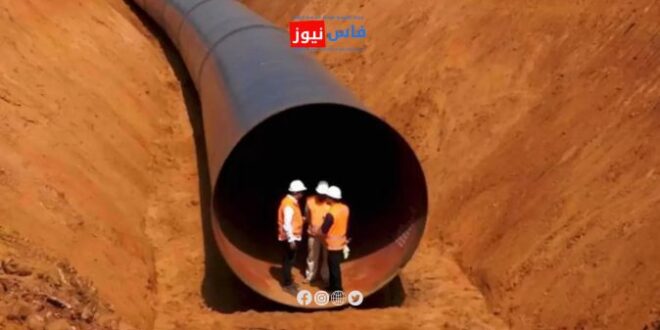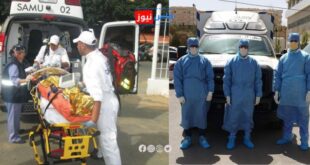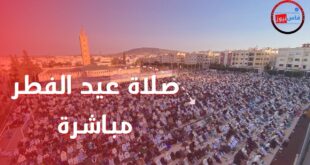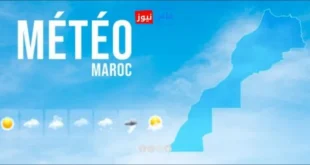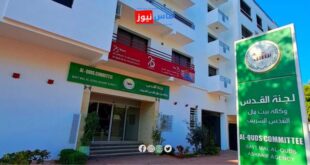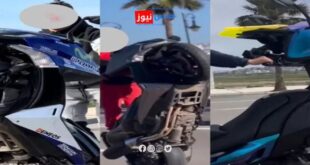Morocco has managed to save millions of people from thirst thanks to the “Water Highway” project, a massive water canal that transfers water from the north to regions suffering from severe water scarcity. However, experts warn that the long-term success of this project remains uncertain in the face of an unprecedented drought plaguing the country.
Despite the heavy rainfall experienced in the northwestern regions in early March, Morocco continues to face acute water stress due to a drought that has persisted for six years. In mid-March, the Minister of Equipment and Water, Nizar Baraka, stated that this period is “the longest in the country’s history,” as previous drought cycles did not exceed three years.
Water supplies have decreased by nearly four times in the last ten years compared to the 1980s, falling from an annual average of 18 billion cubic meters to 5 billion cubic meters, according to the Minister. Rainfall has also decreased by 75% compared to the “normal” average over the past six years, and temperatures have risen by 1.8 degrees Celsius last year, exacerbating water evaporation.
Under these conditions, residents of Rabat and its surrounding areas faced the risk of drinking water supply disruptions in late 2023, following the drying up of the dam that supplies the capital, as mentioned by Mr. Baraka. However, about 12 million people were saved from thirst thanks to the transfer of surplus water from the Sebou basin (north), as explained by Mahjoub Lahrache, an official at the Ministry of Agriculture, to AFP.
Instead of flowing naturally towards the Atlantic Ocean, the water of Sebou, one of the country’s most important rivers, is collected at a station in the suburbs of Kenitra, where it is treated before being transferred through a 67-kilometer underground canal to the capital, according to daily needs.
Since its inauguration in late August 2023, this “Water Highway” has ensured the supply of drinking water to Rabat and its surroundings, as well as the northern part of the economic capital, Casablanca, located 90 kilometers from Rabat. According to official data, more than 700 million cubic meters of water have been transferred until early March thanks to this project.
The first phase of the project, which was built urgently after the exacerbation of water stress, cost about 7 billion dirhams (more than 664 million euros), according to Mr. Lahrache. The “Water Highway” is expected to be extended to connect several dams located in the far north of the country to the Marrakech region (south).
This project is considered strategic for the country, although Morocco mainly relies on seawater desalination to increase its drinking water resources. In this regard, Mr. Baraka noted that Morocco suffers from “unequal distribution of water resources. 53% of rainfall falls on only 7% of the country’s land.”
Researcher Nabil El Mosaid added, “Large amounts of rain collected in the northern basins flow into the Mediterranean or the Atlantic (without being collected). This is why the Water Highway is so important.” However, the researcher warns that “the northern basins will be much more affected by climate change than the southern basins, according to various climate simulations for the next 60 years.”
El Mosaid adds, “It is possible that the surplus we are talking about today will no longer be present in the future, due to this deficit.” The researcher had recommended in a 2020 study to “reduce the scale of the Water Highway project.”
Abderrahim Handouf, a researcher in irrigation policy, believes that the first phase of the “Water Highway” “is an effective solution in the absence of alternatives.” But he also questions its long-term sustainability, given the climate challenges that “will pose a problem even in the north in the future. Therefore, we must remain cautious.”
The researcher believes that, in addition to water desalination, research should be developed and farmers should be guided to generalize the use of water-saving irrigation techniques. Agriculture contributes 12% to GDP and employs 30% of the population.
 فاس نيوز ميديا جريدة الكترونية جهوية تعنى بشؤون و أخبار جهة فاس مكناس – متجددة على مدار الساعة
فاس نيوز ميديا جريدة الكترونية جهوية تعنى بشؤون و أخبار جهة فاس مكناس – متجددة على مدار الساعة

